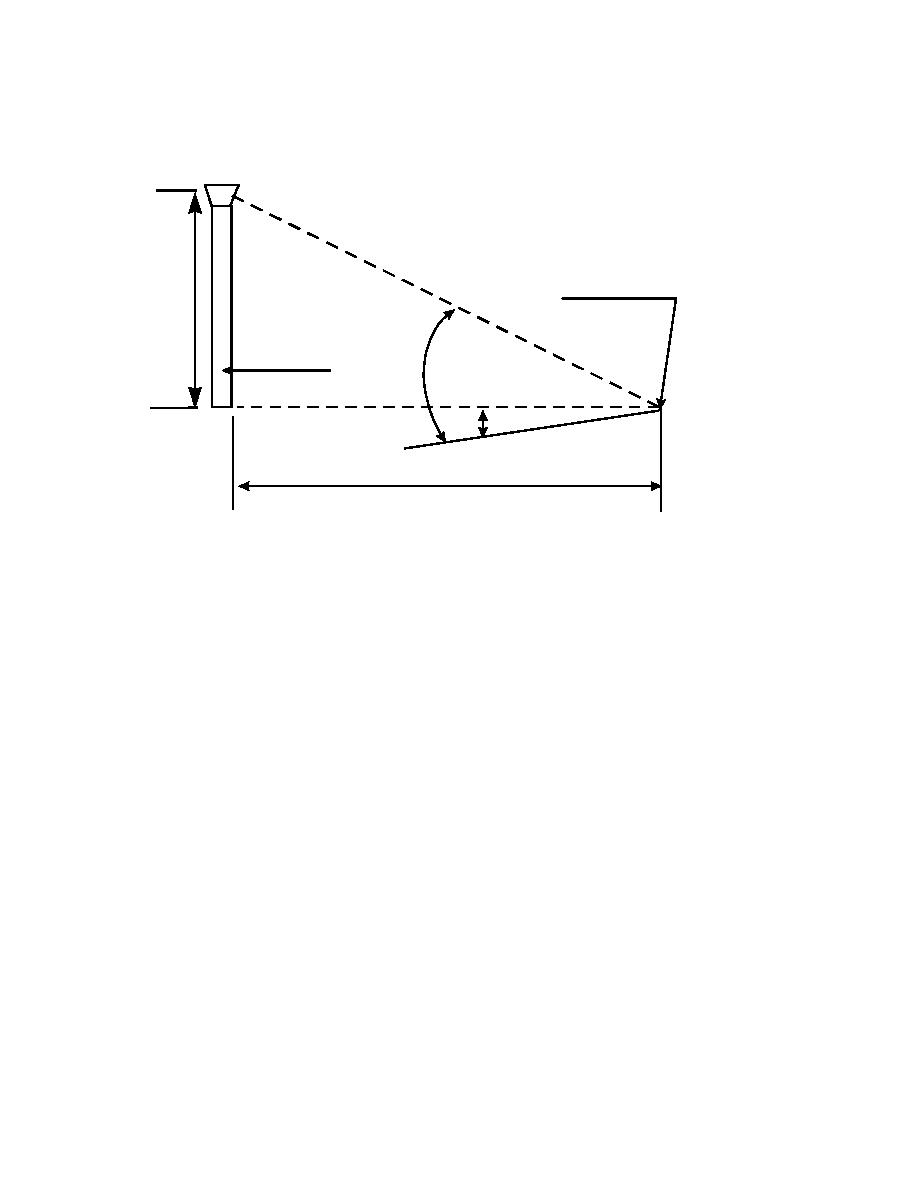
Attachment 18
Figure A18.3. Minimum Eye Level Measurement.
Ee
END OF RUNWAY
OR AIRFIELD
TRAFFIC
SURFACE
H
CONTROL
TOWER
LOCATION
0o 35'
Eb
Gs
D2
Given:
E as = 33.5 m (110') MSL E b = 32.3 m (106.0') MSL
D 2 = 1,828.8 m (6,000')
G s = - 2 min
Find E e :
E e = 33.5 m (110') + H
= 33.5 m (110') + (1,828.8 m (6,000') x tan (35 min - 2 min))
= 33.5 m (110') + (1,828.8 m (6,000') x 0.0096)
= 33.5 m (110') + 17.6 m (57.6')
= 51.1 m (167.6') MSL
Required Eye Level Height = E e - E b = 51.1 m (167.6') - 32.3 m (106.0') = 18.8m (61.6')
CONCLUSIONS:
a. 18.8 m (61.6') height is larger and therefore controls.
b. Eye height to cab ceiling is 2.1 m (7'), therefore overall height is (2.1 m (7') +18.8 m (61.6') =
20.9 m (68.6')).
c. In this case minimum tower height of 20.4 m (67') will not satisfy requirements (see figure
A18.4). Therefore, in order to meet the minimum 35-minute depth perception requirement, an
additional floor must be added to increase the overall height of the proposed control tower.
A18.3. Minimum Required Floor Levels. The ATCT height is established by the required number of
floor levels or by the 35-minute depth perception requirement, whichever is greater. As a rule, all
towers have the following floors, starting with the ground floor (see figure A2-4):
A18.3.1. Chief Controller Office, 3 m (10').
A18-5



 Previous Page
Previous Page
